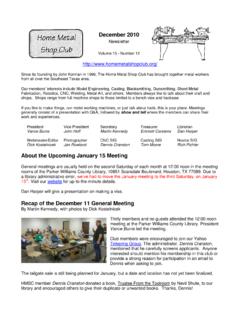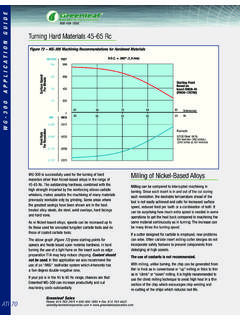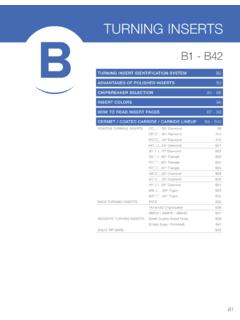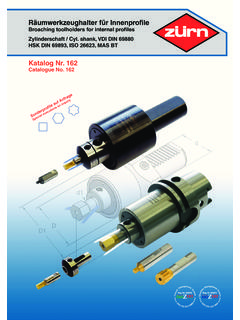Transcription of Fish Mouth Jig for the Lathe, with photos - HMSC …
1 Quickie Fish Mouth Jig for the lathe By George Carlson A fishmouth is the cut made to the end of a piece of tubing, to make it fit snugly onto another piece of tubing. This precise fit is necessary if good welds are to be made. Sometimes this type of joint is referred to as a saddle joint. There are several commercial jigs available. Most involve hole saws and hand drills or drill presses. If you have a lathe , chance are that you can easily make a jig that's not only less expensive, but works far better. The basic idea is to make a V-Block type device that fits on the toolpost of the lathe . The compound is swiveled to the desired angle. The cutter (end mill or hole saw) is mounted in the lathe chuck. And the lathe longitudinal and crossfeed are used to control the cut. Take a look at the drawing: There are two parts to the jig.
2 The first is a block of steel to be held in the toolholder, the second is a piece of angle iron to act as the V-Block. My lathe uses AXA type toolholders, which are made for tools, so I used a piece of steel that was x 1 by about 5 inches long. The length allows me to move it back and forth in the toolholder if necessary. Since I was working with tubing only in diameter, I used 1 inch angle iron. If the tubing you are using is larger, you may want to choose a larger size of angle. The block of steel is beveled along one edge to make better contact with the angle iron. The two pieces are carefully positioned on the welding table and welded together with a intermittent bead. A continuous bead may cause warping, so don't get too carried away with the welding. After the weld cools, put the assembly back in the mill and take a light cut along the bottom of the block of steel.
3 This is to assure that the center axis of the V-Block is aligned with the ways of the crossfeed and the jig is level. Two adjustments must be made when mounting the jig on the toolpost. First, set the compound to zero degrees, lock the jig in a toolholder, then square the toolholder with the face of the lathe chuck by rotating the toolpost. The next adjustment is the set the height of the jig. It is important that the center of the V be aligned with the lathe centerline. I used a center in the tailstock to bring it close, then tweaked it in using some test cuts. Once set, it should remain accurate. Find a cutting device that is very close to the diameter of the tube your part will mate up with . Mine was easy. Since it was mechanical tubing, I used a endmill. Be careful when mounting tools such as endmills in your chuck.
4 Endmill shanks are very hard, and can damage your chuck jaws. Other tools you could use are holesaws and boring heads. Roughing endmills are generally used in the high-dollar commercial tube notching machines. The desired angle of cut is set using the compound. For this cut, the compound was set for a 45-degree angle. As you can see in the photos , my clamping technique was on the low-cost side. Hose clamps work good on Aluminum, but for steel, I think that a stronger clamp such a U . bolts would work better. I was cutting soft aluminum with only a wall, so my biggest concern was that I. didn't crimp or bend the end of the tube. So I made fairly light cuts. If you're cutting 4130 tubing, remember to slow down the cut and use some type of coolant. Here's the result. A very tight a accurate joint and an accurate angle (ignore the welding job, that wall tubing is tough to work with ).









